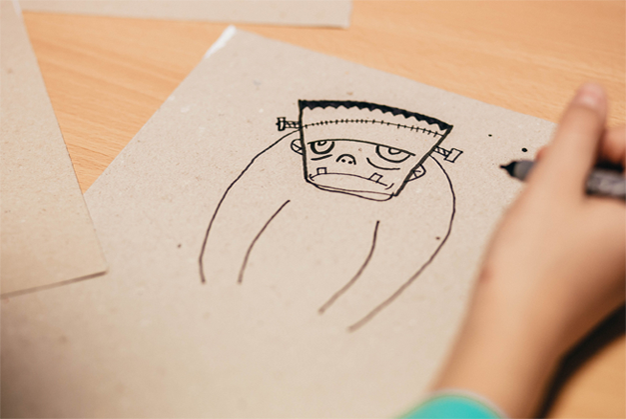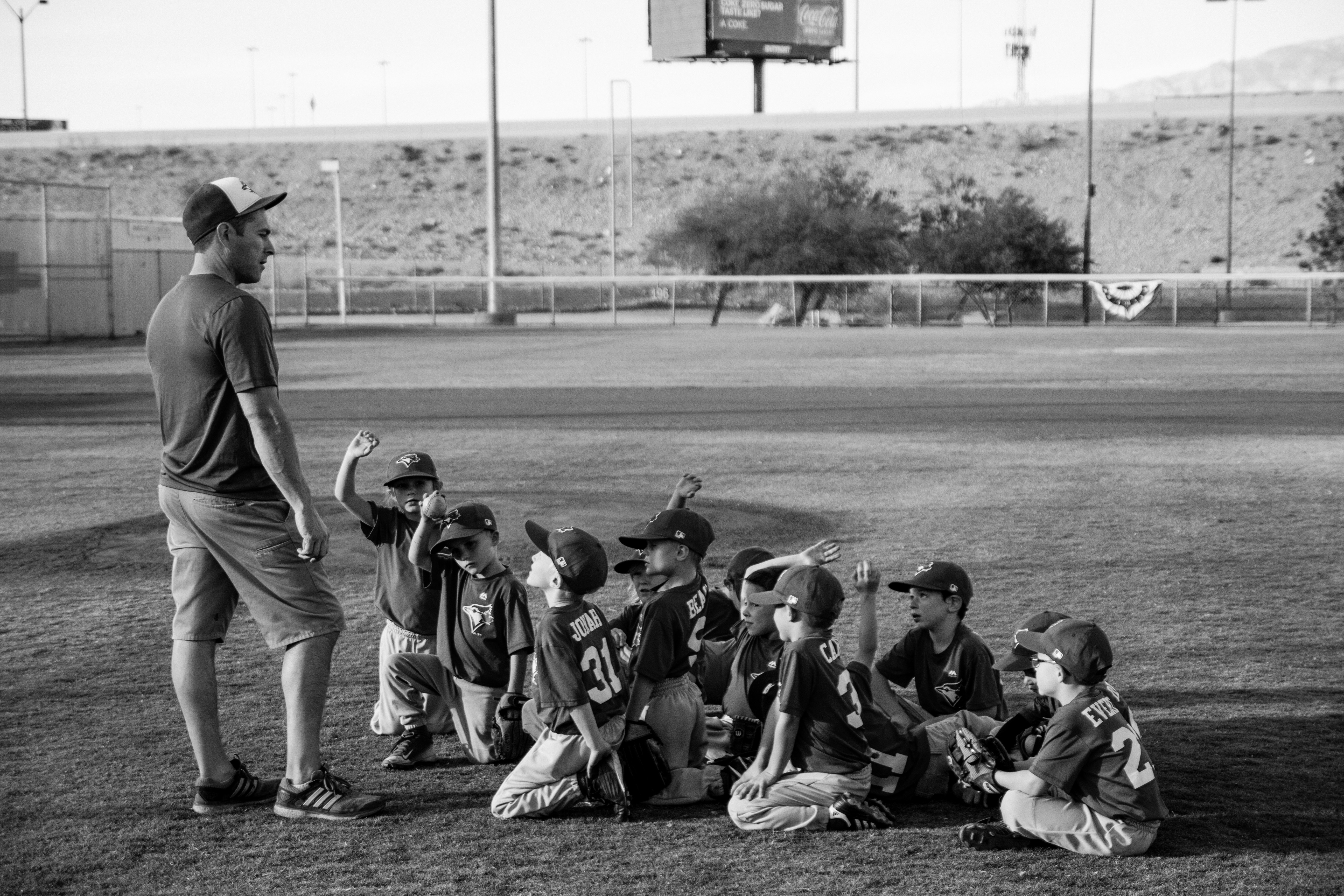Using S.T.A.R. Will Make You Tell Frankenstories
Frankenstory
If you want to create powerful and memorable behavior-based interviewing stories, you need to beware of the Frankenstory.
Interview prep coaches have the right idea: you should convey what makes you different and your interviews should feature case studies, or stories.
But the advice you’ll see on behavior-based interviewing -- like the STAR method -- shows a weak grasp of what makes a story truly effective.
That’s where High Performance Story comes in.

STAR (Situation – Task – Action – Result)
We show you how to get past the ineffective (and sometimes gruesome) Frankenstories created by slavish adherence to the STAR (Situation – Task – Action – Result) method of behavior-based interview storytelling.
We teach you the underlying structure of effective stories – and then we help you to tell your best stories, highlighting your unique strengths, from your own experience.
In fact, we’ll find more in your stories, and more impressive, transferable strengths in you, than you ever imagined having. And you can use those discoveries for life!
- The bullet points on your resume and LinkedIn profile will get stronger overnight.
- Your cover letter will set you apart.
- You'll have networking talking points you feel confident about
- Your interviewing will become memorable, powerful, and effective.
- You'll learn how to promote yourself without feeling (or seeming) like a braggart or a fake.

Using S.T.A.R. Will Make You Tell Frankenstories
1. The challenges you faced
Challenges suggest strengths. They allow us to appreciate the results you achieved. The challenge should be:
- Clear and succinct: only a sentence or two
- Your challenge - not the company's
- Framed generally and without the usual getting into the weeds (unless the technicalities are clearly the point of the discussion)
- Made relevant to your potential employer

We know from centuries of theory and decades of research that STORY is the most effective way to communicate an idea persuasively. A fact embedded in a story is 22 times more likely to be remembered than a fact presented in a list of facts (like most resumes and interview performances).
Since Aristotle, we have consciously understood what story is about: a hero (that’s you) facing serious stakes and overcoming challenges and conflicts to reach a successful result – and showing various heroic qualities (virtues, strengths, skills) along the way.
The basic story structure that acts on your brain (and that you can find in almost every successful movie, commercial, or presentation) involves a challenge (aka call to action, inciting incident), the hero’s journey to overcome that challenge (rising action), and the falling action, ending, denouement – results. The same elements are even present in comedy.
Then crank up the drama -- and the impression you'll make -- by adding secret story sauces like:
Initiative, or Third-Party Validation

If the undertaking was your idea, say so; if you were tapped by superiors for the challenge, that’s also a revealing third-party validation of your abilities. Either way, tell us about it.
The Known Obstacles

If you began with limited resources, say so: not enough time, not enough money, not enough expertise, not enough staff, internal resistance, fierce competition, low confidence, inadequate training, and so on.
The extent of the obstacles you overcome hints at the extent of the strengths (talents), skills, abilities, and knowledge you used to overcome them.
The Stakes

If you and the company were to fail, what could happen to your job? Your reputation? The company’s reputation? A client or customer’s product or service? The company’s bottom line (revenue or costs)? Employee morale?
The Stakes make us feel your Challenge and appreciate the Inner Process you employed to get a Positive Outcome.
2. Your Inner Process - Strengths, Talents, Problem-solving Style
It's important to get the Challenge right, but it's not hard. And the Challenge takes up minimal space and time in resumes, cover letters, and interviews. What's much harder to get right is your display of your own strengths, also known as talents, in meeting the Challenge.
We call this your Inner Process. A blend of your strengths, skills, abilities, knowledge, and values, your Inner Process is your default way of solving problems and approaching challenges. Conveying Inner Processes relevant to the employer, in a compelling and memorable manner, is the entire point of a behavior-based interviewing story!

- What you did – this is what you talk about today
- Your internal decisionmaking process for what you did – few candidates know how to articulate this
- How you did it that way (reveals strengths)
- Why you did it that way (reveals values)
- New, previously unknown obstacles that came up – but which you also overcame
- Key differentiating themes:
- Use of your core differentiating strengths
- Emotional intelligence: awareness of thoughts, feelings, and motivations of yourself and others.
Types of Strengths You Displayed
- Taking initiative or assuming responsibility
- Cultivating, training, mentoring, coaching, or nurturing others
- Cultivating and leveraging relationships
- Influencing or persuading others
- Communicating, in whatever media
- Managing anxiety, adversity, or uncertainty
- Demonstrating resilience, grit, or perseverance
- Innovating, being entrepreneurial, thinking differently, strategically
- Leadership – vision, strategy, taking responsibility, motivating others
- Teamwork – working skillfully with others
3. The Positive Outcome Caused By your Inner Process
Yes, metrics can be useful. They can also be misleading. For best results, our clients frame their Positive Outcomes against not just the Stakes and Challenges (see above), but with the context and peer comparisons that really make your outcomes pack a punch.
We'll help you locate the benefits you provided even in situations without clear numbers attached!

Broaden your definition of results!

What result did you attain for your organization? For other individuals in it? For your team, your mentees, or yourself? For the industry?
Did You Develop Efficient Systems or Processes?

Many people overlook lasting value they've provided in inventing or improving a process, especially one that becomes a best practice. Did your method become a best practice? Was it used by others later? Then you've got some major selling points!
Got Third-party Validation?

Use any quotes from customers, clients, colleagues, superiors – they’re like reviews on a movie poster, or testimonials – they’re powerful.
Were you quoted, or promoted, recognized, or rewarded?
We'll show you why story is the heart of performance-based interviewing
- Why you must treat the job description as a lawyer treats statutes and case law - as something to be rigorously argued and proven, with evidence, logic, and persuasive rhetoric -- and how you too can learn to make winning cases for whatever you want
- How to blow your interviewers away by understanding their brains' wiring for story
- craft compelling, persuasive, and memorable performance-based interview case studies
- learn the crucial techniques of establishing stakes and adversity in your stories, and of explaining not just what you did, but how and why
- Cover letters? Differentiate yourself like a Jedi with what we call The Rhetorical Move of the Master ("I've got everything your job description is looking for, but I've also got the strengths this position really needs")
- How to establish that you possess the emotional intelligence (EQ) that is so highly in demand, and so differentiating, but that your competition has no idea how to talk about.
- How to answer the classic interview questions in ways that are NOT generic -- as just about all advice from the Internet, ebooks, and even DVDs tells you to do -- but instead are differentiating and memorable

We'll show you science-based hacks for YOUR APPROACH TO THE INTERVIEW
Nervous about your interviews? Doubt your ability to treat it as the performance and presentation it should be? We've got you covered. We'll show you:
- How to frame the very idea of your interviews, for maximum performance and learning and minimum stress
- How to transform your nervous energy into excitement (and why allowing yourself to get excited is better than trying to calm yourself down)
- How expert performers like athletes, actors, speakers, and trial lawyers use visualization to decrease anxiety and enhance performance every time

We'll show you science-based hacks for YOUR APPROACH TO THE INTERVIEW
Nearly everything you think you know about interviewing is probably wrong.

High-performance interviewing
Branding is not about a bunch of adjectives. It's a collection of examples, case studies, illustrations -- stories.
Not the unenlightening cliche of ...
I'm a seasoned creative strategic veteran
... but the hero's journey of ...
Confronted with a team low on morale, not to mention a bad reputation with our largest customer, I undertook my own initiative to get the team emotionally invested, to stop their in-fighting, and to upgrade their skills. Within six months we were the top-performing team, out of 22, in the company, and we went on to develop the company's biggest revenue source in 2012.
Which version tells you more about the speaker? Who would you hire?


You don’t have to wear a squirrel suit at work to get into Flow.
Get our free ebook on why Flow is what the happiest and most productive people are optimizing their lives around - and how you can join them!


